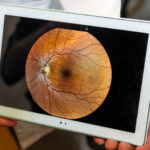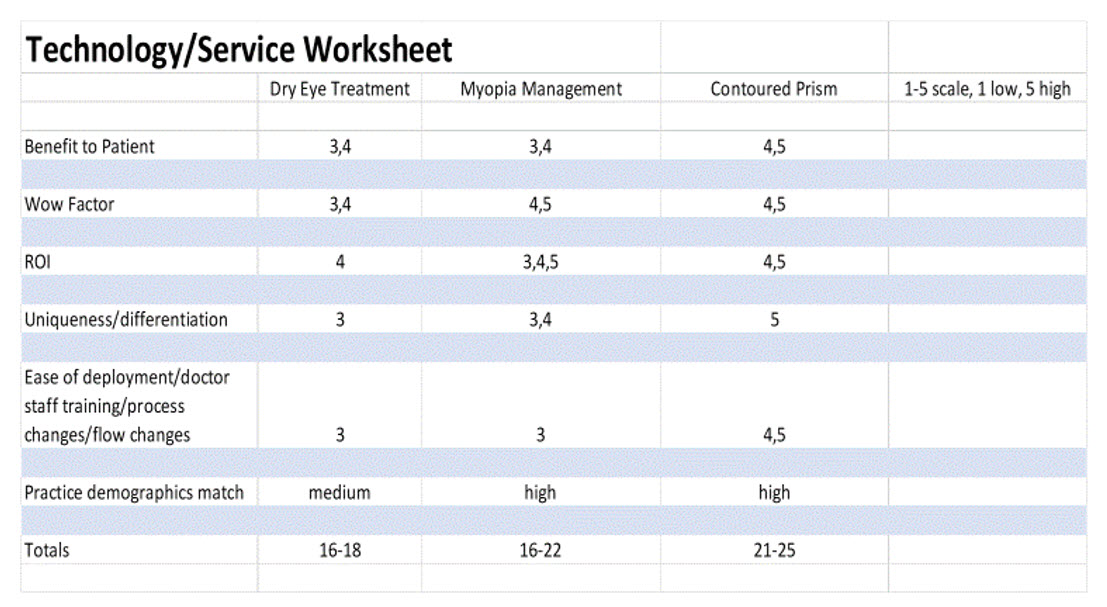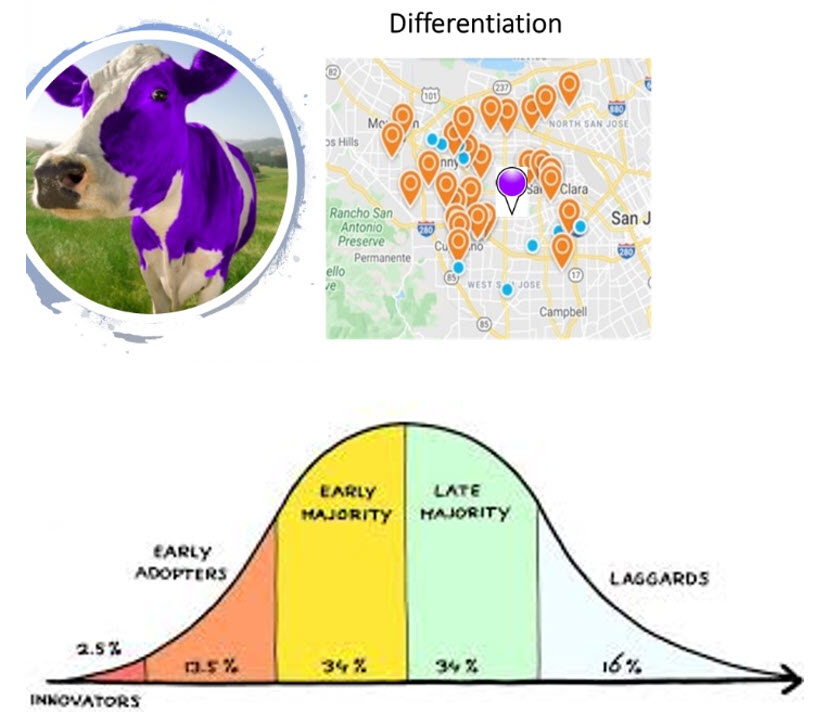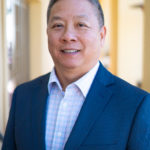By Larry Wan, OD

Dec. 16, 2020
New technology comes with the risk that you will not recoup, and eventually profit from, your investment. Here is what I have learned about differentiating a practice with technology investments that improve patient outcomes, and in the process, build profitability.
A Focus on Patient Outcomes
I went to school a long time ago. Back then I was taught to use a direct ophthalmoscope and streak retinoscope, and to attempt to measure visual fields using a tangent screen with an Isopter. Our exam was something called “the 21 points,” and it took me almost two hours to complete and gather the data. Most importantly, I learned that the most critical part of the examination was the case analysis performed during the last 15 minutes. It was this decision-making process that ultimately determined the patient outcome.
The importance of patient outcomes became one of the pillars of my optometric career. Fast forward 35 years and I find myself almost overwhelmed with the amount of technology available to our practices; but new technology does not guarantee success.
Medical practitioners should focus on technologies that improve on patient outcomes and can help differentiate your practice. One important lesson I learned early in my career that still applies today is to ask myself a simple question: “Will this technology help me differentiate my practice and will it help me improve patient outcomes?” A technology that has the potential to differentiate your practice, but has little “wow” factor for improving patient outcomes, drops down significantly for me in my rating system.
Projecting the Impact on Patient Outcomes & Experience
The easiest part of adopting any new technology is typically writing the check. The harder part is developing a process to utilize the technology effectively, evaluating if the technology fits the practice’s core values and determining how likely it is that the practice can change its process flow to incorporate the new technology. I also want to incorporate technology that can give my patients a “wow” factor, or differentiate my practice from others they may have visited.
To simplify my analysis, I devised a simple grading worksheet that helps me rate new technology on the following criteria: benefit to patient, wow factor, ROI, differentiation and ease of deployment. Do not think of the rating system as good or bad, but rather as a method to help evaluate multiple considerations and comparisons. Let us look at each of the categories a little closer.

For the sake of discussion, I have chosen to compare dry eye treatment, myopia management and contoured prism. The above worksheet shows how I would rate these technologies for my practice, as well as the logic behind my ratings.
Let us look at contoured prism first. What I most appreciate about contoured prism is that it is an optical solution for medical issues. There are countless patient testimonials attesting to dramatically improved symptomatology simply by incorporating contoured prism into their lens designs. In many cases, the impact is nothing short of life changing. I have found that contoured prism can be accurately and reliably determined by the neurolens measuring device. This measurement takes 3-4 minutes and is typically performed during your pretesting sequence. Once you identify the patient and educate them how contoured prism can help address their symptoms, it then becomes a simple optical process.
Other Articles to Explore
As we all know, prism correction in general is underutilized. Optometry owns the comfortable vision space and should continue to do so. There is tremendous opportunity for practices to prescribe prism when identified properly. If you look at symptoms of digital vision syndrome, the Vision Council found that 65 percent of patients report symptomatology (2016). As far as benefit to patients, it has been reported that over 90 percent respond favorably to treatment and over 80 percent report willingness to recommend to others.
Finally, as contoured prism is not typically covered by insurance, the profitability impact to the practice can be substantial given the impressive patient outcomes and feedback. If you refer back to the worksheet, you can see how I rated contoured prism. From my viewpoint, contoured prism has high benefit for patients, great wow factor, good ROI, is relatively easy to deploy and offers true uniqueness. Contoured prism is totally unique, and there is only one company that offers it: neurolens.
Consider dry eye management next. I have been personally involved in several FDA dry eye clinical studies during my career. Dry eye management can be simple or fairly involved. One of the most difficult issues regarding dry eyes is that many patients are asymptomatic despite significant clinical indications. Some dry eye procedures are straightforward, such as prescribing a Bruder mask and lid scrubs. Others are more complex and may require extensive patient education with multiple procedures and office visits, such as incorporating BlephEx, LipiFlow, iLux or TearCare.
As many of us have learned, dry eye treatment is not a one-and-done program. There can be significant hand holding. We have all experienced “home runs” with some of our dry eye patients, but there are invariably patients who feel no improvement despite your best efforts. Because of this variability in possible treatments and outcomes, dry eye management takes a high level of commitment; however, it can be very rewarding.
Let’s expand a little on ROI. One trap when considering ROI is to consider simply the purchase price of the technology. A more accurate assessment of ROI would also include time investment( ODs and staff), other supporting equipment and non-reusable items (activators, swabs, additional imaging, etc.) and possibly additional space. This example is similar if you consider in-office finishing lab. It is not just the equipment cost, but may also include the addition of highly trained dedicated staff and additional space. Referring to my sample worksheet, you can see how I rated dry eye management.
Lastly, let us look at myopia management. During my clinical career I was highly involved with overnight orthokeratology. Atropine treatment was just evolving, so my comments will mostly reflect the specialty contact lens segment. Specifically, I used overnight reverse geometry orthokeratology lenses such as Paragon’s CRT. What I loved about treating moderate myopes was the “wow” factor for patients. It can be dramatic going from 20/200 unaided VAs to 20/20 after the first night of wearing the contact lenses. That is a big “wow” factor.
As with any complicated specialty type of contact lens fitting, sometimes everything falls in place and other times it can take a fair amount of patience. One personal patient example involved a high functioning Asperger’s 10-year-old boy that took my staff six separate insertion and removal sessions to treat him successfully. I would gladly do it again with no hesitation.
Factoring in the Impact of Being Unique & Different in the Technology You Use
As a parting note, I want to pay special attention to one category on the worksheet: uniqueness and differentiation. Earlier, I mentioned my office was located in Silicon Valley. What I neglected to mention is that there are over 25 other eyecare practitioners within a five mile radius of my practice. Creating a niche for my practice leveraging uniqueness or differentiation is critical to my continued success. I like to use the purple cow concept. What do I have to do to be the purple cow in an ocean of brown cows?

My answer has been to always strive to be an innovator/early adapter in the optical space, leveraging cutting-edge technology to directly improve patient outcomes. Why compete with the whole world when you can be in the top 15 percent? I humbly suggest modernizing the purple cow concept by renaming it the purple pin concept!
 Larry Wan, OD, is a graduate of Pacific University. He is the former managing partner of Family EyeCare Center, in Campbell, Calif., and is currently a clinical advisory consultant with neurolens. To contact him: Larry.Wan@neurolenses.com
Larry Wan, OD, is a graduate of Pacific University. He is the former managing partner of Family EyeCare Center, in Campbell, Calif., and is currently a clinical advisory consultant with neurolens. To contact him: Larry.Wan@neurolenses.com





















